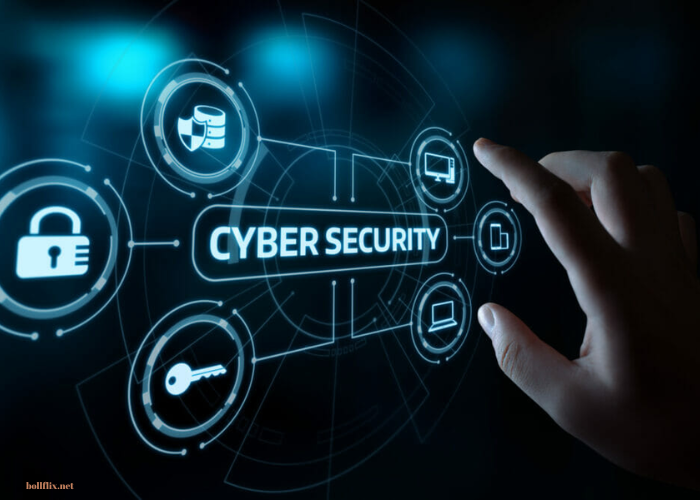As we move deeper into the digital age, the importance of cybersecurity continues to grow exponentially. In 2024, protecting digital assets is not just a technical requirement but a strategic imperative for businesses, governments, and individuals alike. With the increasing sophistication of cyber threats and the relentless advancement of technology, staying ahead of potential vulnerabilities is more crucial than ever. This article explores the latest trends in cybersecurity for 2024, providing insights into how organizations and individuals can protect their digital assets more effectively.
Artificial Intelligence and Machine Learning in Cybersecurity
One of the most significant trends in cybersecurity for 2024 is the widespread adoption of Artificial Intelligence (AI) and Machine Learning (ML) technologies. These tools have become essential in identifying and responding to cyber threats in real-time. AI and ML algorithms can analyze vast amounts of data to detect anomalies that might indicate a security breach. Unlike traditional methods, these technologies learn from each interaction, continuously improving their accuracy and effectiveness.
AI-driven cybersecurity systems can predict potential threats before they become active attacks. By analyzing patterns and behaviors, these systems can identify unusual activities that could signify a cyber attack, enabling preemptive actions. This proactive approach is invaluable in preventing breaches and minimizing damage, as it allows for quicker responses and more precise threat identification.
Zero Trust Architecture
The concept of Zero Trust Architecture (ZTA) is gaining traction as a fundamental cybersecurity strategy. Zero Trust is based on the principle that no user or system, whether inside or outside the organization, should be trusted by default. This approach requires verification for every user and device attempting to access resources on a network.
In 2024, the implementation of ZTA is becoming more comprehensive and sophisticated. Organizations are adopting this model to reduce the risk of internal and external threats. Zero Trust involves several components, including multifactor authentication (MFA), strict identity verification, and continuous monitoring of network activity. By enforcing these measures, organizations can ensure that only authorized users and devices can access sensitive data, thereby significantly reducing the risk of breaches.
Rise of Quantum Computing and Its Implications
Quantum computing represents a significant leap in computational power, which could potentially render current encryption methods obsolete. While quantum computing is still in its nascent stages, its potential impact on cybersecurity cannot be underestimated. In 2024, there is increasing attention on the development of quantum-resistant algorithms to protect data against future quantum attacks.
Organizations are beginning to explore quantum-safe cryptography to secure their digital assets against the future capabilities of quantum computers. This involves creating encryption methods that are robust enough to withstand the processing power of quantum machines, ensuring long-term security for sensitive information.
Increased Focus on Supply Chain Security
Supply chain attacks have become a major concern for cybersecurity professionals in recent years. In 2024, this trend is expected to continue as attackers increasingly target suppliers and service providers as a means to infiltrate larger organizations. These attacks exploit the trust relationships between companies and their vendors, making them particularly challenging to defend against.
To counteract these threats, organizations are prioritizing supply chain security by implementing stricter vetting processes for third-party vendors and suppliers. They are also adopting continuous monitoring practices to detect any signs of compromise in their supply chain. By taking these steps, businesses can mitigate the risks associated with supply chain attacks and protect their digital assets more effectively.
Enhanced Privacy Regulations and Compliance
With the increasing concern over data privacy, regulatory bodies around the world are enacting stricter data protection laws. In 2024, organizations are expected to face heightened scrutiny regarding how they collect, store, and manage personal data. Compliance with regulations such as the General Data Protection Regulation (GDPR) in Europe and the California Consumer Privacy Act (CCPA) in the United States is becoming more critical than ever.
To stay compliant, organizations must implement robust data protection measures and regularly audit their data management practices. This includes ensuring that data is encrypted, access is restricted to authorized personnel, and that comprehensive data breach response plans are in place. Adhering to these regulations not only helps protect sensitive information but also fosters trust with customers and stakeholders.
Expansion of IoT Security Measures
The Internet of Things (IoT) continues to grow at an unprecedented rate, with billions of connected devices now part of everyday life. However, this proliferation of IoT devices presents significant security challenges, as many of these devices are vulnerable to cyber attacks. In 2024, there is a greater emphasis on securing IoT devices and networks to protect digital assets.
Organizations are adopting comprehensive IoT security frameworks that include device authentication, secure communication protocols, and regular firmware updates. Additionally, there is a growing trend toward creating a centralized management system for IoT devices to monitor and control access, reducing the risk of unauthorized entry and potential breaches.
Rise of Ransomware-as-a-Service (RaaS)
Ransomware attacks have been a persistent threat in the cybersecurity landscape, but the rise of Ransomware-as-a-Service (RaaS) is making these attacks more accessible and prevalent. RaaS allows cybercriminals to lease ransomware tools and infrastructure from developers, lowering the barrier to entry for conducting ransomware attacks.
In 2024, organizations need to be more vigilant than ever to protect themselves from ransomware attacks. This involves implementing robust backup strategies, conducting regular vulnerability assessments, and training employees to recognize phishing attempts and other common tactics used by attackers. By staying proactive, organizations can minimize the risk of falling victim to ransomware.
Human-Centric Cybersecurity
Human error remains one of the leading causes of security breaches. In response, cybersecurity strategies in 2024 are increasingly focusing on the human element. Organizations are recognizing the need to train employees on cybersecurity best practices and to foster a culture of security awareness.
This human-centric approach involves regular training sessions, phishing simulations, and clear communication about security policies and procedures. By empowering employees with the knowledge and tools they need to recognize and respond to potential threats, organizations can significantly reduce the risk of breaches caused by human error.
Greater Collaboration Between Public and Private Sectors
As cyber threats become more sophisticated and widespread, there is a growing recognition of the need for collaboration between the public and private sectors. In 2024, governments and private organizations are increasingly working together to share threat intelligence, develop cybersecurity standards, and respond to cyber incidents.
This collaboration is crucial for creating a unified front against cyber threats. By pooling resources and expertise, both sectors can develop more effective cybersecurity strategies and enhance their ability to protect digital assets. Additionally, this partnership fosters a more resilient cybersecurity ecosystem, capable of adapting to emerging threats and challenges.
Adoption of Cybersecurity Mesh Architecture
Cybersecurity Mesh Architecture (CSMA) is an emerging trend that involves creating a flexible, modular approach to security. Instead of relying on a single security perimeter, CSMA allows for a distributed approach, where security policies are applied based on the identity of users and devices, regardless of their location.
In 2024, organizations are adopting CSMA to provide more granular control over their security policies and to better protect their digital assets. This approach is particularly effective in environments with a dispersed workforce or where cloud-based resources are widely used. By implementing CSMA, organizations can ensure that their security measures are adaptive and responsive to the changing threat landscape.
Advances in Biometric Security
Biometric security measures, such as fingerprint recognition, facial recognition, and voice authentication, are becoming more prevalent in 2024. These technologies offer a higher level of security than traditional passwords, which can be easily compromised. Biometric security provides a unique and often more secure method of verifying user identities, reducing the risk of unauthorized access.
As biometric technology continues to advance, it is becoming a more integral part of cybersecurity strategies. Organizations are integrating biometric authentication into their access control systems to enhance security and protect sensitive information. By leveraging biometrics, organizations can add an additional layer of protection to their digital assets.
Conclusion
The cybersecurity landscape in 2024 is marked by rapid technological advancements and evolving threats. As cyber attacks become more sophisticated, the need for robust cybersecurity measures is more critical than ever. By embracing the latest trends, such as AI-driven cybersecurity, Zero Trust Architecture, quantum-resistant encryption, and enhanced IoT security, organizations can protect their digital assets more effectively.
Moreover, fostering a culture of security awareness, prioritizing supply chain security, and adopting a collaborative approach between the public and private sectors are essential steps in building a resilient cybersecurity ecosystem. As we navigate the challenges and opportunities of the digital age, staying informed and proactive is key to safeguarding our digital assets against the ever-evolving cyber threats.



